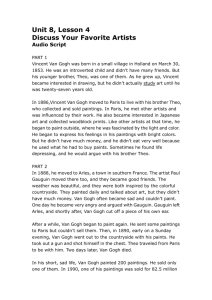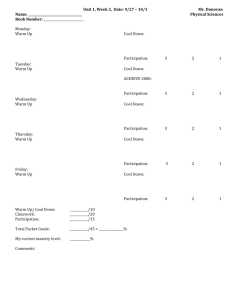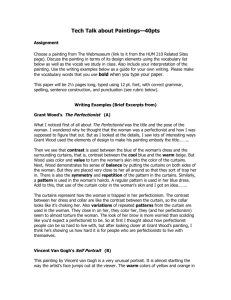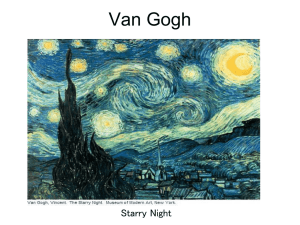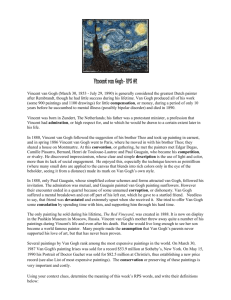Warm and cool color paintings
advertisement
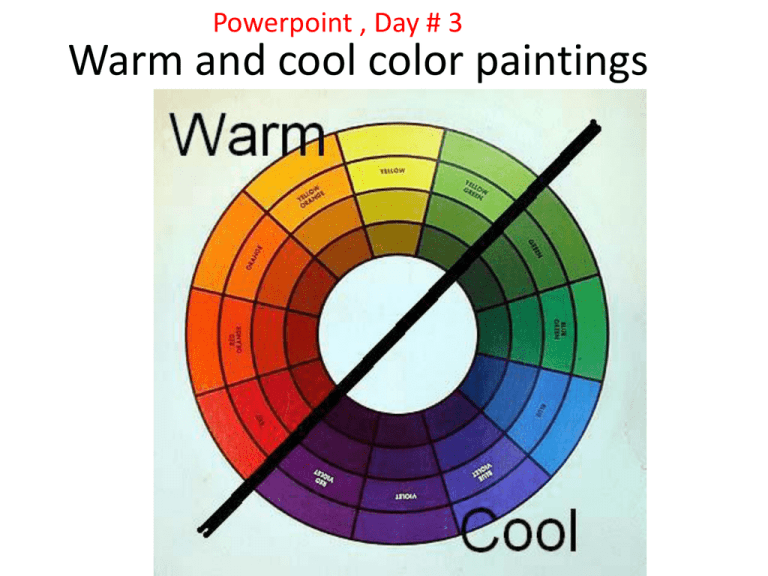
Powerpoint , Day # 3 Warm and cool color paintings Objectives for the project • Students will be able to individually create a warm color composition • Students will be able to individually create a cool color composition. • Students will identify the colors that are seen as warm and as cold. • Students will apply their comprehension of the color wheel to a composition, using blending techniques and knowledge from the paint demonstration. Goals for the project: • Students applying their knowledge of color theory to a warm and a cool colored painting. • Students will be able to block out the main areas of the paintings before beginning to use paint. • Students understand the relation of culture (Holi festival) and history (Van Gogh’s Bedroom at Arles) of color and apply the knowledge to 2 paintings. State Standards for The Color Unit: • 1.0 ARTISTIC PERCEPTION (when looking at Van Gogh’s works, and discussing meanings and interpretations) • 2.0 CREATIVE EXPRESSION (warm and cool colors subject matter, color wheel template piece, both with tempura paint) • 3.0 HISTORICAL AND CULTURAL CONTEXT (Holi Festival, Van Gogh’s work during the time period and how it was different and focused on the poor, not the regal) • 4.0 AESTHETIC VALUING (forming opinions on artworks by Van Gogh, and listening to the opinions of others) • 5.0 CONNECTIONS, RELATIONSHIPS, APPLICATIONS Jobs related to color, bellwork questions, paint samples, Media’s use of color for marketing) Warm or cool? Why? Still Life Vase with Fifteen Sunflowers c.1889 by Vincent Van Gogh Starry Night Painting, Oil on Canvas, Saint-Rémy, France: June, 1889, The Museum of Modern Art, New York, New York. Warm or cool? • The Tragedy (1903) • Pablo Picasso How do we defend a work of art? 4.3 Formulate and support a position regarding the aesthetic value of a specific work of art and change or defend that position after considering the views of others. Elements of Art • • • • • • • 1 Texture 2 Form 3 Space 4 Shape 5 Color 6 Tone (Value) 7 Line Principles of Design • • • • • • • • • • Unity Emphasis Balance Proportion /Scale Contrast Movement Rhythm/Pattern Variety Harmony Space Pablo Picasso, The Old Guitarist, 1903, oil on panel, Art Institute of Chicago.
